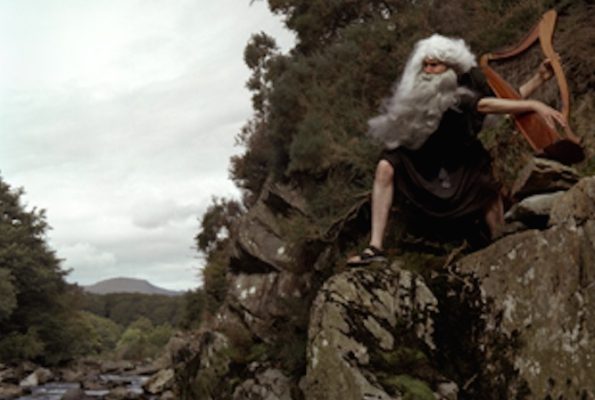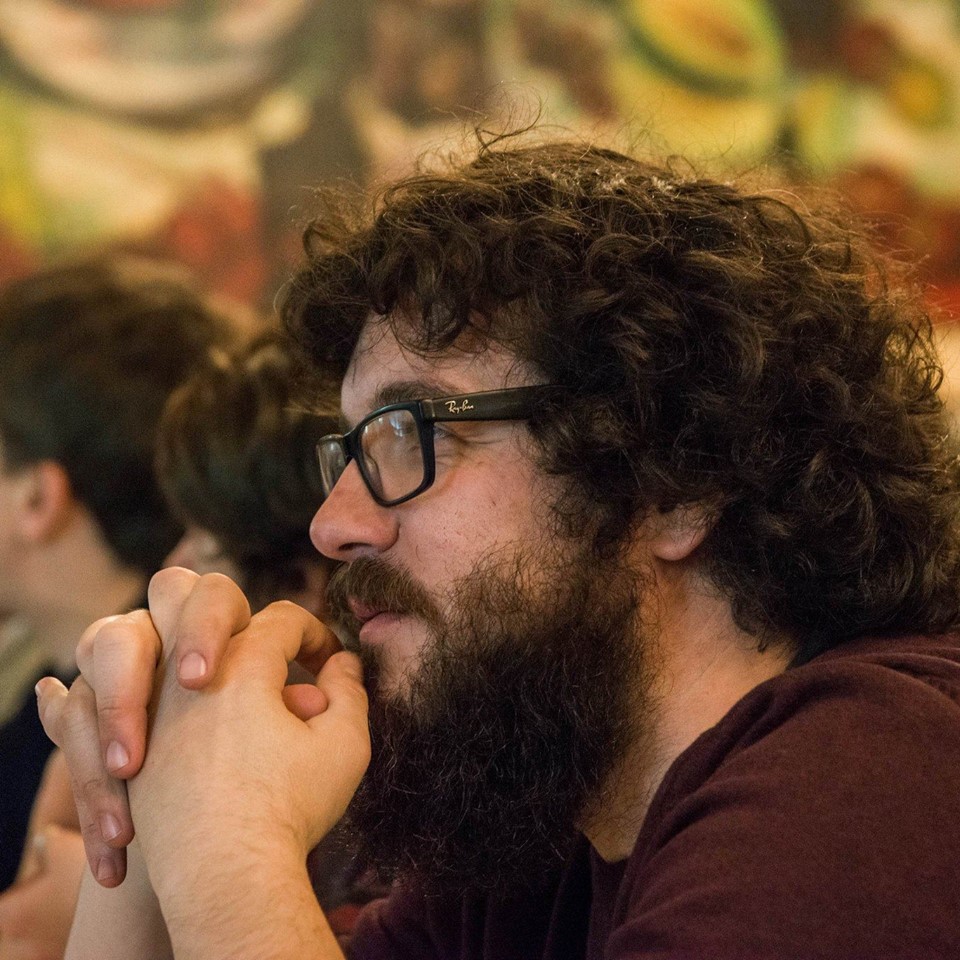Search
To search for an exact match, type the word or phrase you want in quotation marks.
A*DESK has been offering since 2002 contents about criticism and contemporary art. A*DESK has become consolidated thanks to all those who have believed in the project, all those who have followed us, debating, participating and collaborating. Many people have collaborated with A*DESK, and continue to do so. Their efforts, knowledge and belief in the project are what make it grow internationally. At A*DESK we have also generated work for over one hundred professionals in culture, from small collaborations with reviews and classes, to more prolonged and intense collaborations.
At A*DESK we believe in the need for free and universal access to culture and knowledge. We want to carry on being independent, remaining open to more ideas and opinions. If you believe in A*DESK, we need your backing to be able to continue. You can now participate in the project by supporting it. You can choose how much you want to contribute to the project.
You can decide how much you want to bring to the project.

Well, you’re my friend and can you see,
Many times we’ve been out drinkin’,
Many times we’ve shared our thoughts,
But did you ever, ever notice, the kind of thoughts I got?
Will Oldham. I see a darkness
Several years ago I thought up, and wrote, an exhibition proposal under the title Bufones y trovadores (Clowns and Troubadours) that addressed the narrative condition of the artist. Taking the parody of the clown and the troubadour’s seduction as two possible ways of analysing the current role of the artist. I presented it to some open submissions but, after several rejections, I decided to abandon it. Now dealing with the connexions between folk music and contemporary art I can’t help but fall back on the figure of the bard, once again. In the bard’s attitude, function, dynamics, and rhythms there is something emotional and discursively connected with the artist. His performative narrative, the oral transmission of stories, or his journeying from town to town, singing ballads, are qualities that make it possible to establish certain links between both positions.
What is more, when the artist empathises directly with the imaginary of the musician, or more particularly the singer-songwriter, these links multiply. In this way, the attributes of folk (voice, song and acoustic instrumentation) establish the narrative thread of an account that revises the works of some artists who are sensitive to the genre. Or to put it more directly: this text talks of visual artists who, in a literal or figurative sense, sing and play the guitar in a porch, at a slow rhythm, sometimes from the light and sometimes from darkness. Visual artists who offer us experiences and sensations derived from the literary, sonorous and ideological schema of folk singing.
And given the concept of artist-bard has made me return to those times of Bufones y Trovadores, I begin this brief journey with a piece from then, one which fulfils a double function. On the one hand, it recuperates and closes a project based on the performativity of the story and on the other it opens an essay dedicated to a possible “folkie” attitude in contemporary art: the attitude of the bard.
Bard Attitude (2005) is an action by the Welsh artist Bedwyr Williams. A parodied, exaggerated reading of the epic representation of the bard in which oral narration, performance and comedy play an important part. In it we see the artist dressed up as a bard, reciting and intoning his lyre, in the wilds of nature. A heroic gesture, voluntarily ridiculed by Williams (false beard, huge lyre, modern sandals) in a loose interpretation of The Bard (1817), the mythical painting by John Martin, one of the most distinguished painters of British romanticism. Despite the fact we only see here the photographic record, Bard Attitude consists of a performance where the artist uses oratory and humour to expose and vindicate his Welsh roots within an art scene – the British, the international – that is marked by a clear dominance of English.
On the other hand, Bard Attitude always makes me think of Bonnie Prince Billy (Will Oldham), one of the most significant reformers of American folk active today. And, curiously there are several artists I know who are interested in his sound, his stories or directly in his persona. Maybe it’s his sensitivity and charisma, as well as his position distant and contrary to the mainstream that makes him an attractive figure for the art scene close to popular music. In fact, at least from my subjective and limited reading, part of the connections between art and folk that I can talk about, gratifyingly pass through Will Oldham.
For example, the Portuguese artist, Joao Onofre presented in 2007 the video Untitled (I see a Darkness), an adaptation of the song I see a Darkness (1999) by Bonnie Prince Billy in which two children, 11 y 12 years old, sing and play, on a guitar and piano, the version that Johnny Cash signed in the year 2000. As usual in the work of Onofre, his staging generates a tension and strangeness that is hard to digest. Two smiling children, eager to do their best, singing a song, which simply because of their age or for the feelings they know nothing of, they can’t understand.

A year later, Susan Phillipsz presented in the private foundation Jarla Partilager in Stockholm a sound installation also called I see a Darkness. An immersive piece, lasting barely seven minutes (loudspeakers and light effects distributed within the exhibition space) where the Scottish artist mixed different sound recordings to offer a specific sensory and psychological experience. In the first instance, the “amateur” recording of her voice singing a capella the song of Bonnie Prince Billy; continuing with a piano piece by Maurice Ravel (Pavane for a Dead Princess, 1899); and, finally, a new interpretation of Phillipsz singing an Italian barcarolle from the 19th century dedicated to Santa Lucia. Once again the emotional incursion of Will Oldham, becomes an exercise in the exploration of extreme feelings.
In 2008, Richard T. Walker, an English artist living in San Francisco, invited Will Oldham to participate in one of his projects. The pieces by Richard T. Walker are usually solitary recordings in breathtakingly sublime settings (for example deserts or mountains within American territory,) in which the artist recites and interprets musical compositions of experimental and intimate folk music to the magnificence of nature. A mise en scène of our romantic perception of the natural environment that finds in the proximity of the song a possible means with which to blur the cultural artifice of the landscape. Despite the solemnity of the territory, the “land-art” performances of Walker leave the landscape on a secondary plane, thereby inverting the usual contemplative relation of the individual in relation to his surroundings. What am we/you/i waiting for?, the project with Oldham, situates them both on the peak of a mountain to sing together, awaiting a sublime experience that never happens. Filmed in different landscapes of Texas and New Mexico, In the predicament of always (as it is), 2014 is one of his latest projects. In it the artist innovates with two elements: the progressive disappearance of the action (that are always reminiscent of the contemplative figures of Caspar David Friedrich) and the physical and sonorous incorporation of the electric guitar.
In 2012, Ragnar Kjartansson presented The Visitors, a complex video-installation with nine synchronised projections that break down a folk song, expanding it across the rooms of an old stately mansion, la Rokery Farm, situated in the state of New York. The Icelandic artist, with musicians and friends from Reikiavik, gives rise to a collective experience and a community feeling that hypnotizes the spectator, inviting her to move through the exhibition space following, in silence, the autonomous and differentiated presence of each of the parts (voices, guitars, violins, accordion, piano, drums…). Amongst them, playing the guitar in a bath, one finds Kjartansson himself. I was able to see the installation last year in the Museum Guggenheim Bilbao, and the sensation that the piece transmits is really extraordinary, unusual and marvellous. Something akin to the experience, although it has nothing to do with folk, but yes with music, instilled by watching Zidane, A 21st Century Portrait (2006) by Douglas Gordon and Phillip Parreno, with the sound track by Mogwai. The perfect communion between image and sound, which makes you never want to abandon that space. And maybe this is what folk can bring to contemporary art: the direct emotional intensity of a simple song that you want to listen to, over and over again.

David Armengol (Barcelona, 1974) is an independent curator who combines his curatorial practice with other parallel activities such as cultural management and teaching. He is particularly interested in music, nature and storytelling, but from the field of contemporary art. In other words, he does not know how to play any instrument, is not a great adventurer and does not master the art of storytelling. In a way, it is enough for him that his passions of sound, landscape and narrative coexist in the format of an exhibition. That’s why he always thinks of artists.
"A desk is a dangerous place from which to watch the world" (John Le Carré)